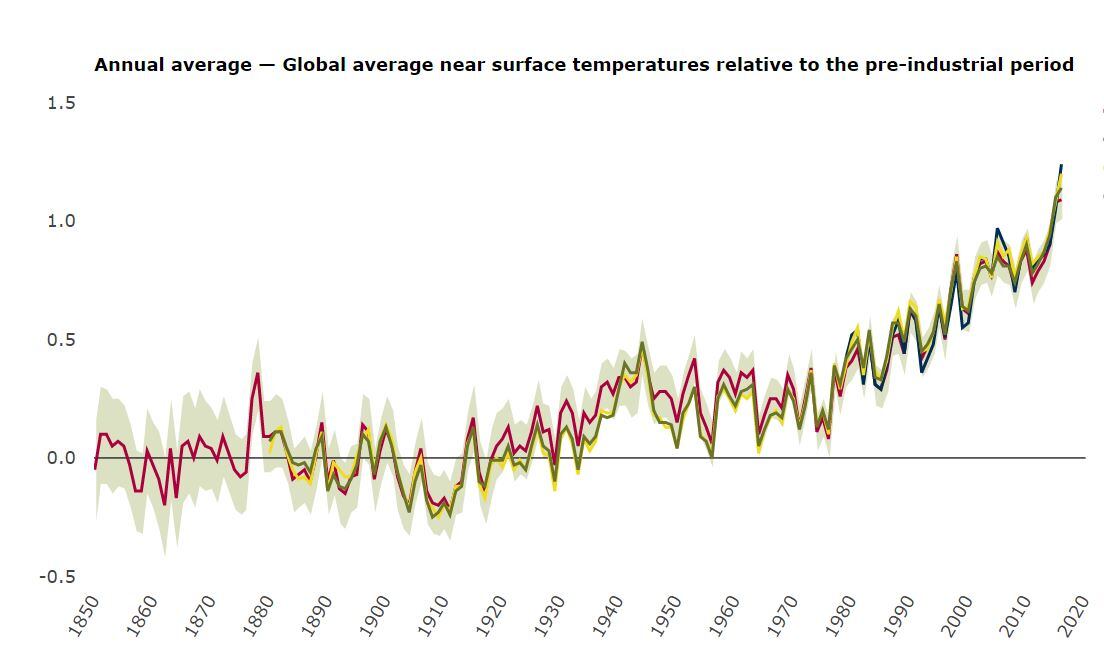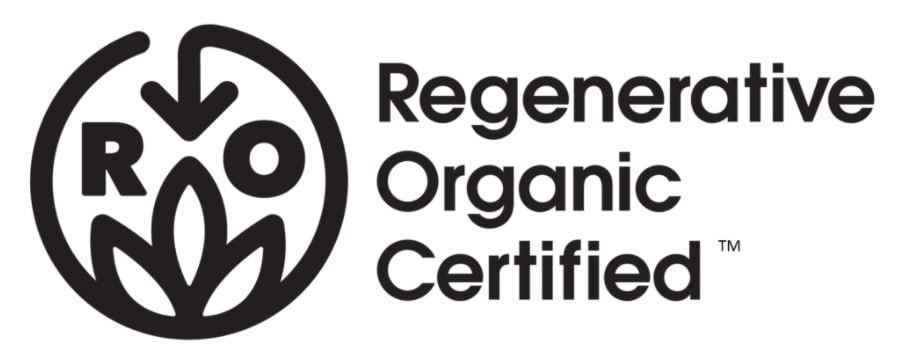European institutions and industries are united by a consensus on the urgent need to tackle climate change. According to data from the European Environment Agency, global average annual near-surface temperatures for the last decade were 0.87-0.92 °C warmer than the pre-industrial average.
The rate of global warming is accelerating. Climate models project further increases in global average temperature over the 21st century (for the period 2081–2100 relative to 1986–2005) of between 0.3 and 1.7 °C for the lowest emissions scenario and between 2.6 and 4.8 °C for the highest emissions scenario.

Scientific opinion, reflected in the Paris Climate Change agreement, places the point of no return – when global warming reaches dangerous levels – at 2°C.
Food industry: Climate change contributor and casualty
The food sector stands at an unhappy intersection. Food production is on the front line of climate change. It is also one of the largest contributors of emissions.
As an industry, it is highly vulnerable to the repercussions of global warming, resulting in insecurity and uncertainty in supply chains. Climate events like heatwaves disrupt agricultural production. Europe has experienced six “extreme” heat waves since 2000, the EEA noted. Under a high emissions scenario, extreme heat waves as strong as these or even stronger are projected to occur as often as every two years, the agency predicted.
Food production is a big emitter of greenhouse gases, the primary cause of climate change. Animal farming, for instance, is one of the main sources of human-induced greenhouse gas emissions, accounting for 14.5% of the total according to the United Nations' Food and Agriculture Organization.
Greenpeace goes further in its assessment of the significant impact of food production on climate change. “Manure management, fertiliser manufacturing and use in the production of animal feed, as well as ruminants’ digestion process and land-use change, generate large amounts of greenhouse gases, such as nitrous oxide, methane and carbon dioxide,” the environmental lobbyists noted.
Returning CO2 to the soil
As a significant CO2 emitter, the food industry is uniquely positioned to tackle climate change through innovation. This has pushed the concept of regenerative agriculture up the agenda.
Mark Driscoll, freelance sustainable food systems consultant at Tasting the Future, told FoodNavigator that he has done “a lot” of work on regenerative agriculture in the last few months. “Lots of businesses are starting to look at this issue,” he explained.
“There are different definitions of regenerative agriculture. For me it’s about agricultural systems that put more back into the environment and society, so it leads to farmer livelihood as well an environmental outcomes.”
Typically, regenerative agriculture incorporates practices like cover cropping, no till methods, crop rotation, mixed farming, and, increasingly, the use of smart technologies to improve efficiency. In its grandest sense, regenerative agriculture can be used to take carbon out of the atmosphere and return it to the soil. Over a longer time-frame, this delivers results not only in terms of cutting CO2 but also improves soil health and productivity, with the potential to reduce reliance on chemical fertilisers.

In the US, the Rodale Institute launched a certification scheme, Regenerative Organic Certified, last month in a bid to communicate the benefits of regenerative production. According to research from Rodale, if current crop acreage and pastureland shifted to regenerative organic practices, 100% of annual global CO2 emissions could be sequestered in the soil.
The scheme already has the backing of some big brands, including Danone’s Horizon Organic, Vega and Happy Family units.
Organic 2.0?
While the Regenerative Organic concept sounds something like 'organic plus', there is resistance to the idea of a certification scheme for food producers who use regenerative practices in European organic circles.
The Regenerative Organic Certified scheme focuses on three pillars: soil health, animal welfare and social fairness.
Eduardo Cuoco, International Federation of Organic Agriculture Movements (IFOAM) EU Director, told FoodNavigator that these are already part of Europe’s organic certification standards.
“All the pillars in the scheme are part of the principles of organic farming. These principles are the roots from which organic agriculture has developed and continues to grow. They have been agreed through an inclusive and worldwide process involving a wide range of organic agriculture movements.
"The principles under Soil Health and Animal Welfare are specifically addressed too - at different levels of details - by the EU Organic Regulation and - in more detail - by many private organic standards applicable in the EU. Some private standards in the EU also address social fairness,” he stressed.

Cuoco also noted key differences between US and EU organic regulations that could potentially make a separate certification more necessary in America. For example, Cuoco noted, in the US it has been clarified that organic hydroponics is allowed. This means that, contrary to the EU, the US allows out-of-soil production of organic food.
He added: “Also in the US, amendments to the organic standards aimed at improving animal welfare requirements have been rejected and removed from the scope of the regulation. The situation is different in the EU, where the organic regulation is much closer to the organic principles and private standards are raising the level of ambition even more.”
The rigorous European standards mean that the organic logo is “increasingly recognised by consumers” in the region and is associated with providing value in terms of biodiversity protection, soil quality and animal welfare, the IFOAM director said.
For Driscoll, too, the “last thing we need” is “yet another certification scheme” to communicate the benefits of regenerative agriculture. “In my view we have to move beyond certification. Many people now recognise that certification is limited in terms of impact and look at the key principles/practices which underpin regenerative agriculture.”
The sustainability consultant believes that the food sector must now look at how regenerative principles can be extended across additional agricultural systems, spanning organic and conventional, extensive and intensive. “Most importantly there is a need for retail and manufacturing business, governments and investors to ensure policies and practices support a regenerative or restorative approaches.”
Calls for eco policy mounting
Driscoll, who is based in the UK, described this as a “real opportunity” post Brexit for the UK to take regenerative practices beyond organic and extend them to mainstream agriculture.
Pressure is mounting at a European level for agricultural policy to reflect the EU’s environmental priorities.
Late last month, IFOAM and Greenpeace – alongside 18 other civil society groups - delivered a letter to European Council president Donald Tusk, EC president Jean-Claude Juncker and European Parliament president Antonio Tajani, policy action on animal farming.
As well as stressing the contribution animal farming makes to climate change, the groups suggested that current policy favours industrialised intensive agriculture over small-scale “family farms”.
They stressed that meat and dairy production and consumption levels must be cut in order to deliver a sustainable food future in Europe.
“Farmers adopting more sustainable and higher welfare animal farming methods, such as organic farming, must be encouraged and rewarded. However, it is impossible to shift to more humane and less industrial farming methods while at the same time maintaining the current levels of consumption and production of animal products.
"If we are to meaningfully tackle some of the most serious societal and environmental crises of our time, we need to significantly reduce the production, consumption and export of meat, dairy and eggs,” they wrote.
In a report released yesterday, IFOAM EU also called for the creation of an “ambitious” Eco Scheme under Pillar I of the Common Agriculture Policy. The proposal would remunerate farmers for delivering public goods and for linking clear CAP objectives with performance indicators.
“We need to modernise the CAP to move away from compensating farmers to rewarding farmers for the public goods that they deliver to society. This report shows that a new CAP payment model is possible. For this reform to be effective, the whole CAP structure should have a strong focus on sustainability,” Cuoco argued.
